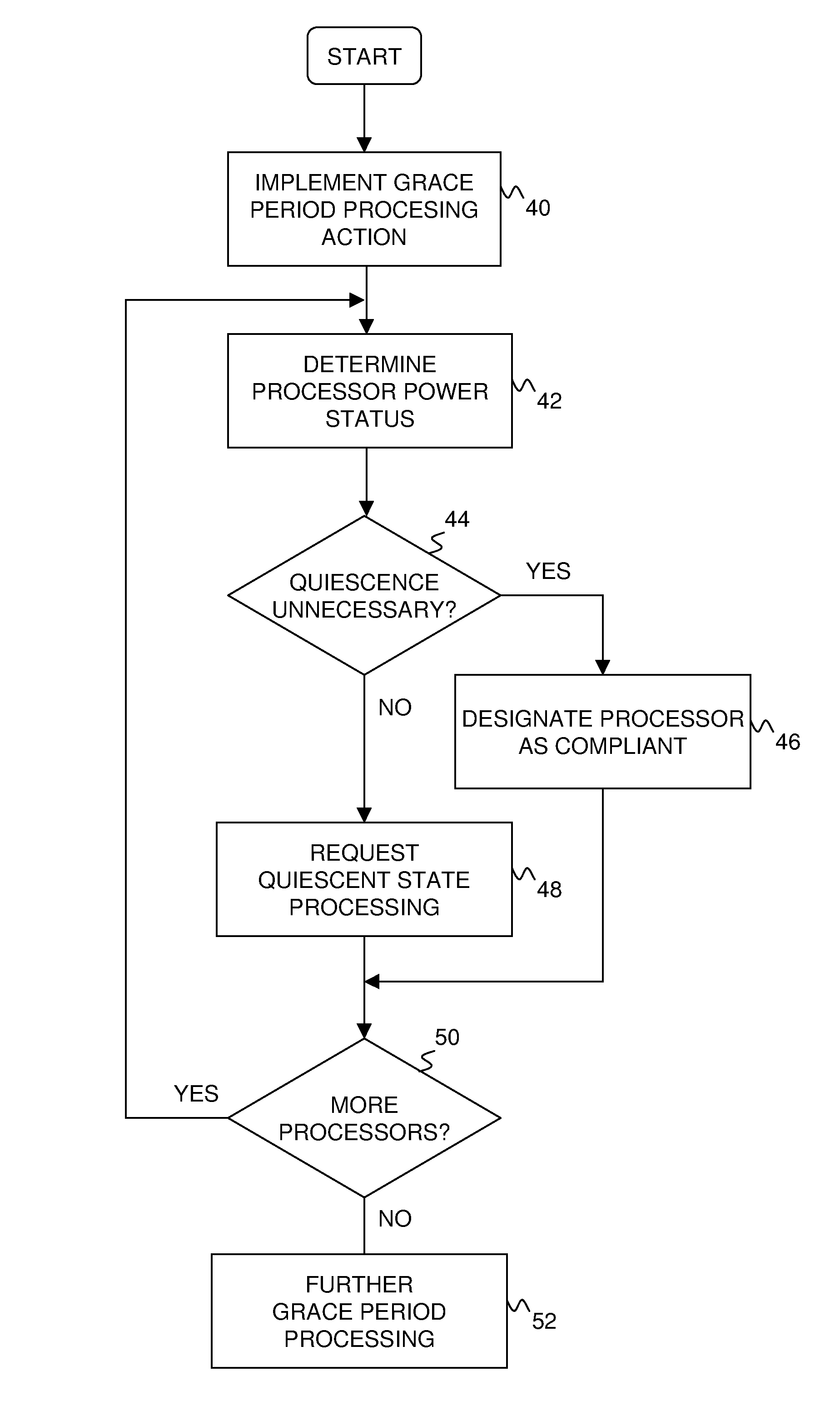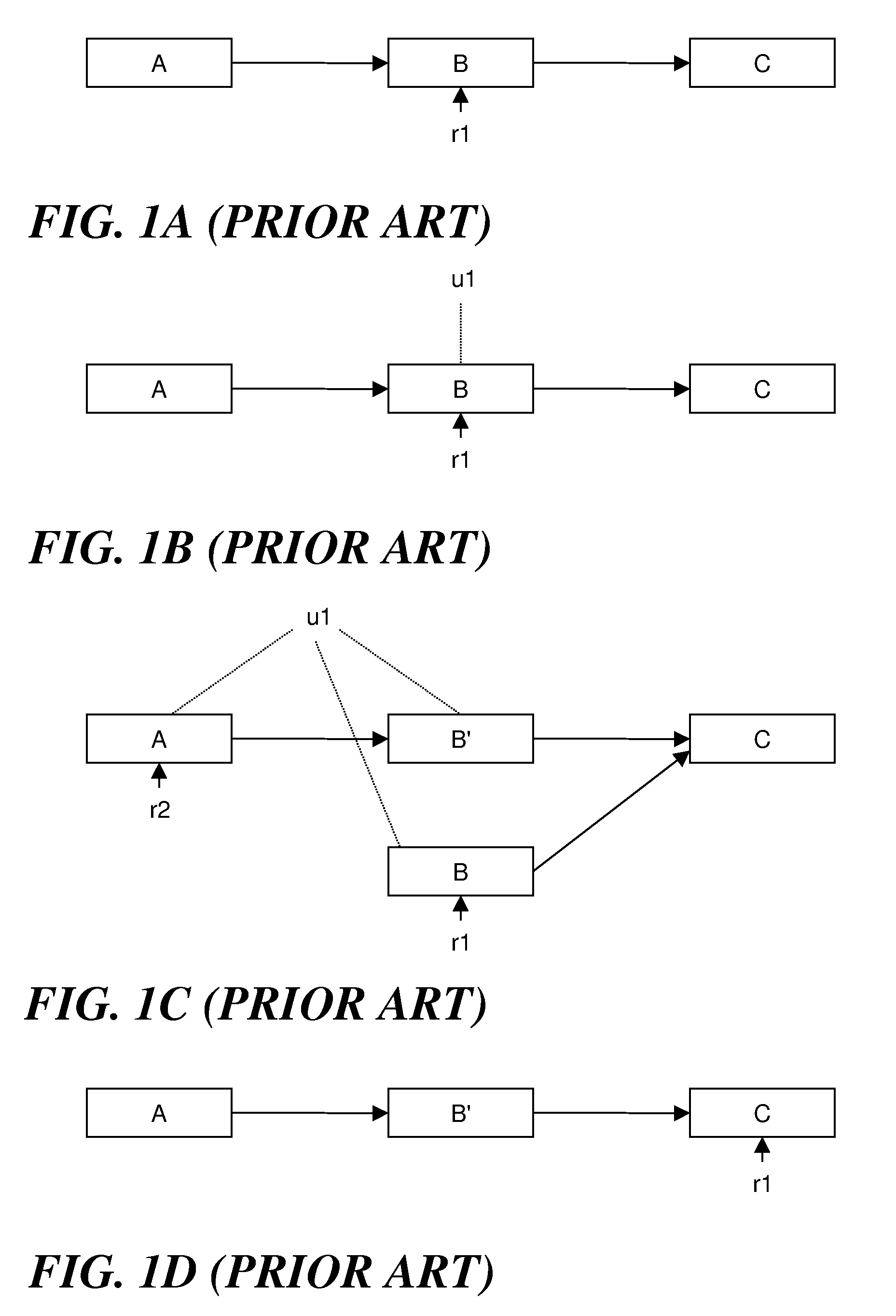Optimizing non-preemptible read-copy update for low-power usage by avoiding unnecessary wakeups
a non-preemptible read-copy update and low-power technology, applied in the field of computer systems, can solve the problems of high power consumption of processors with low-power higher-latency states, non-preemptible implementations of non-preemptible readers currently not considering processor power states, and quite burdensome read-side lock acquisition
- Summary
- Abstract
- Description
- Claims
- Application Information
AI Technical Summary
Benefits of technology
Problems solved by technology
Method used
Image
Examples
Embodiment Construction
[0025]Turning now to the figures, wherein like reference numerals represent like elements in all of the several views, FIG. 4 illustrates an example of a computing environment in which the low-power technique described herein may be implemented. In particular, a symmetrical multiprocessor (SMP) computing system 2 is shown in which multiple processors 41, 42 . . . 4n are connected by way of a common system bus 6 to a shared memory 8. Respectively associated with each processor 41, 42 . . . 4n is a conventional cache memory 101, 102 . . . 10n and a cache controller 121, 122 . . . 12n. A conventional memory controller 14 is associated with the shared memory 8. The computing system 2 is assumed to be under the management of a single multitasking operating system adapted for use in an SMP environment.
[0026]It is further assumed that update operations executed within kernel or user mode processes, threads, or other execution contexts will periodically perform updates on a set of shared da...
PUM
 Login to View More
Login to View More Abstract
Description
Claims
Application Information
 Login to View More
Login to View More - R&D
- Intellectual Property
- Life Sciences
- Materials
- Tech Scout
- Unparalleled Data Quality
- Higher Quality Content
- 60% Fewer Hallucinations
Browse by: Latest US Patents, China's latest patents, Technical Efficacy Thesaurus, Application Domain, Technology Topic, Popular Technical Reports.
© 2025 PatSnap. All rights reserved.Legal|Privacy policy|Modern Slavery Act Transparency Statement|Sitemap|About US| Contact US: help@patsnap.com



